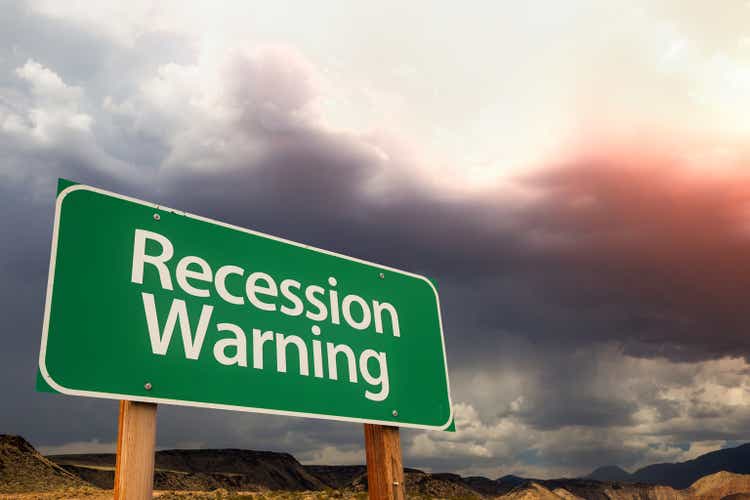Feverpitched
Analysts Have Turned From Bullish To Bearish
Upstart Holdings, Inc. (NASDAQ:UPST) has continued to underperform the S&P 500 (SPX) (SP500) remarkable recovery from its October lows. However, it’s also possible that UPST could have formed its bottom at its initial post-earnings selloff in early November.
Moreover, Wall Street analysts have turned from bullish to bearish over the past year. We believe they have penciled in their most bearish assumptions in the company’s forward projections.
As such, it should help CEO David Girouard & his team to execute better from 2023, despite worsening macro headwinds. However, we must emphasize that management has done itself no favors in 2022 with its strategic flip-flops in utilizing its balance sheet, subjecting Upstart’s earnings to potentially higher fair value adjustments, volatility, and added credit risks.
However, the “dislocated” funding environment has likely forced the company’s hand, exacerbated by its target market of relatively weaker borrowers. As a result, Upstart was hit by a double whammy of lower demand (due to lower conversions and thus much lower loan volumes) and also lower funding supply.
Consequently, it helped conjure up a hugely underwhelming FQ3 earnings release that saw conversion rates slashed to 10% and loan transaction volume down 48% YoY.
Hence, the critical question is whether investors have de-risked Upstart’s execution risks on its business model sufficiently as we move toward a more restrictive monetary policy stance in 2023.
The Fed Remains Hawkish Through 2023
Fed Chair Jerome Powell highlighted the FOMC’s updated summary of economic projections at yesterday’s (December 14) presser, seeing a 5.1% median terminal rate through 2023 (up from 4.6% previously). As such, the Fed doesn’t expect any pause or cuts in early 2023, although it expects to slow down its rate hikes to 25 bps from the next meeting onward.
Therefore, it’s clear that the Fed is moving away from hiking rates rapidly to combating inflation toward managing how high the terminal rate needs to be and how long to keep it there.
Notwithstanding, we assessed that it helps to mitigate a critical headwind that has likely kept institutional investors (Upstart’s primary funding source) away as they were concerned with significant interest rate volatility.
With the Fed’s hiking cadence slowing toward a more “data dependent” phase to managing its forward terminal rates, we believe investors’ focus could turn to whether a mild-to-moderate recession could be on the cards.
The Fed’s summary of economic projections doesn’t anticipate such an outcome, even though the market has likely priced in a mild-to-moderate recession at the SPX’s October lows. However, Powell also forewarned investors/strategists/economists thinking that they have a crystal ball, as he articulated: “I don’t think anyone knows whether we’re going to have a recession or not, and if we do, whether it’s going to be a deep one or not. It’s not knowable.”
A Deep Recession Could Torpedo Upstart’s Recovery
Hence, Upstart investors need to be wary here, and we think that’s likely one of the critical factors for its underperformance. The company has highlighted that it was not keen to obtain a bank charter to help drive funding visibility, as CEO David Girouard articulated:
We don’t believe us being a bank makes a lot of sense for what we hope to pursue for lots of reasons. But having said that, we can certainly do a better job of securing supply of funding on our platform. (Upstart FQ3’22 earnings call)
Thus, the critical aspect of its funding strategy is whether institutional investors are confident enough to support the company’s strategy of focusing on “less prime” borrowers through a potential recession (with depths unknown).
Upstart’s business model has done itself no favors in 2022, as it crumbled after investors pulled their funding, leading to poor execution over consecutive quarters. As such, we believe it’s justified for the market to batter UPST in 2022 (down nearly 90% YTD) to reflect its likely flawed funding model, which was decimated.
Unless Upstart can fix its funding sources sustainably and convince investors that it has sufficient funding buffer to tide through the economic upturns/downturns, sentiments are likely to be capricious. It means we don’t expect investors to regard UPST as a core holding but one that investors look to hold mainly as a speculative position.
UPST’s November Bottom Could Be Telling
With UPST down nearly 90% from its 2021 highs, it doesn’t necessarily mean it would recover from here. However, our analysis suggests that its November lows should hold if the recent pullback is sustained.
As such, investors are likely assessing whether Upstart could pull through a potentially deeper recession without taking more significant hits to its loan demand/funding sources. As of now, it appears that the market seems “satisfied” that significant risks have been reflected at UPST’s November lows.
Hence, if the bottom holds, UPST should be able to consolidate robustly and attempt a mean-reversion bear market rally against its bearish bias.
Maintain Buy but cut our medium-term price target to $22, implying a potential upside of 30%.


Be the first to comment